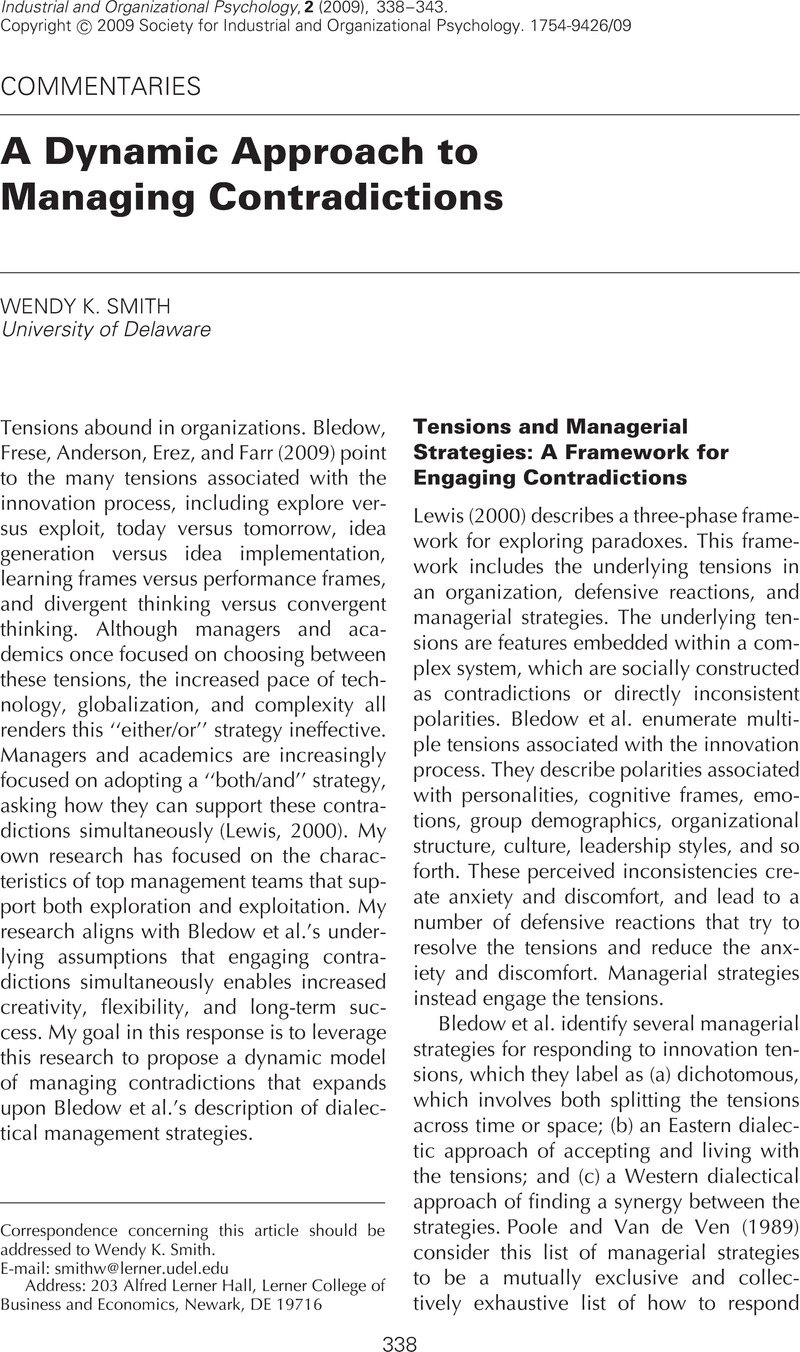Crossref Citations
This article has been cited by the following publications. This list is generated based on data provided by Crossref.
Bledow, Ronald
Frese, Michael
Anderson, Neil
Erez, Miriam
and
Farr, James
2009.
Extending and Refining the Dialectic Perspective on Innovation: There Is Nothing as Practical as a Good Theory; Nothing as Theoretical as a Good Practice.
Industrial and Organizational Psychology,
Vol. 2,
Issue. 3,
p.
363.
Michaud, Valérie
2011.
Proposition pour l’étude des tensions dans le mouvement, la sociomatérialité et le paradoxe.
Revue internationale de communication sociale et publique,
p.
47.
Cantarello, Silvia
Martini, Antonella
and
Nosella, Anna
2012.
A Multi‐Level Model for Organizational Ambidexterity in the Search Phase of the Innovation Process.
Creativity and Innovation Management,
Vol. 21,
Issue. 1,
p.
28.
Blickle, Gerhard
John, Julia
Ferris, Gerald R.
Momm, Tassilo
Liu, Yongmei
Haag, Rabea
Meyer, Gesine
Weber, Katharina
and
Oerder, Katharina
2012.
Fit of Political Skill to the Work Context: A Two‐Study Investigation.
Applied Psychology,
Vol. 61,
Issue. 2,
p.
295.
Schultz, Carsten
Schreyoegg, Jonas
and
von Reitzenstein, Constantin
2013.
The moderating role of internal and external resources on the performance effect of multitasking: Evidence from the R&D performance of surgeons.
Research Policy,
Vol. 42,
Issue. 8,
p.
1356.
Tse, Terence
2013.
Paradox resolution: A means to achieve strategic innovation.
European Management Journal,
Vol. 31,
Issue. 6,
p.
682.
Carter, William R.
2015.
Ambidexterity deconstructed: a hierarchy of capabilities perspective.
Management Research Review,
Vol. 38,
Issue. 8,
p.
794.
Enninga, Tanja
and
van der Lugt, Remko
2016.
The Innovation Journey and the Skipper of the Raft: About the Role of Narratives in Innovation Project Leadership.
Project Management Journal,
Vol. 47,
Issue. 2,
p.
103.
Del Rosario Benavides, Maria
and
Ynalvez, Marcus Antonius
2018.
Academics’ “ambidextrous behavior” and doctoral science mentoring practices.
Scientometrics,
Vol. 115,
Issue. 1,
p.
79.
Cropley, David H.
and
Cropley, Arthur J.
2018.
Die Psychologie der organisationalen Innovation.
p.
1.
LaBrenz, Catherine A
Reyes-Quilodran, Claudia
Padilla-Medina, Diana
Arevalo Contreras, Miguel
and
Cabrera Piñones, Luz
2023.
Deconstructing bias: The decision-making process among child protective service workers in Chile.
International Social Work,
Vol. 66,
Issue. 3,
p.
697.
Miron-Spektor, Ella
2025.
Handbook of Advances in Culture and Psychology.
p.
172.



